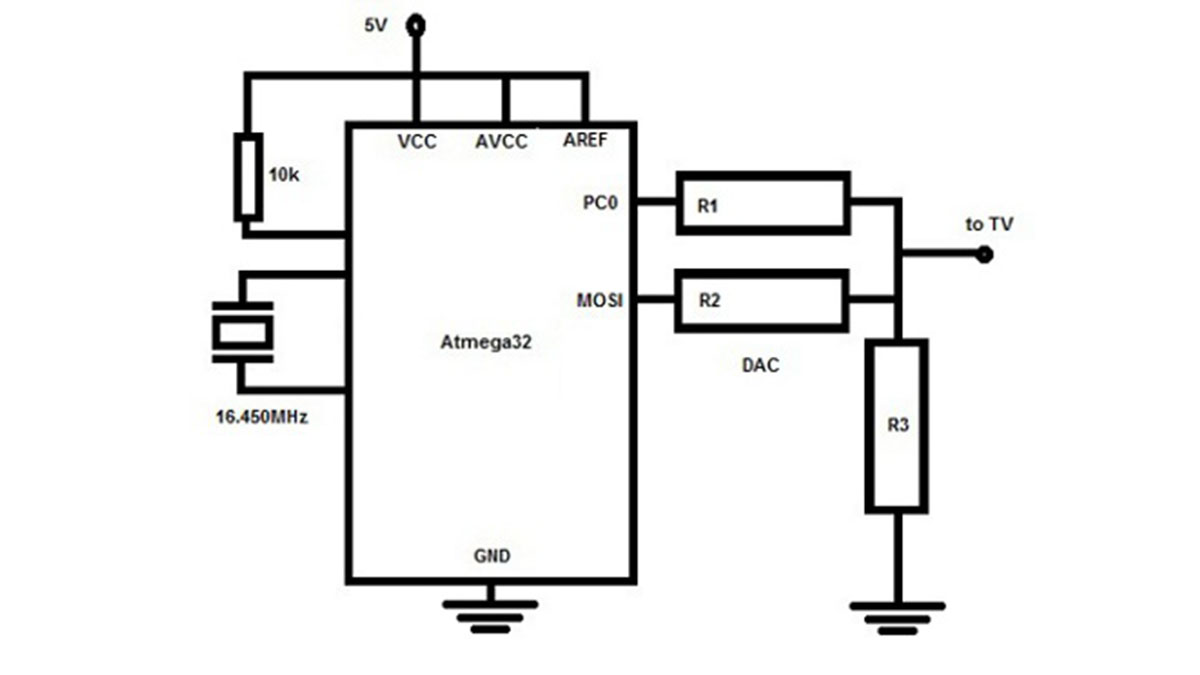Introduction:
I am interested to draw lines, square, rectangle, circle etc on my TV screen. At first I was confused where to start. While thinking about it, a pencil and an eraser came to my mind. If we have a good pencil, eraser and a paper, then we can draw on it according to our own logic. If we use the pencil with compass and scale, we can draw circle, line, box etc on the paper. This is the basic idea I implemented in this small hobby project.
I divided my tv screen into 128 x 64 pixels. I am using atmega32 microcontroller. It got 2kb RAM. So, if each pixel takes 1 bit, then 128 x 64 pixels takes (128*64/8) = 1024bits of RAM(screen buffer). Still I can increase the resolution but any way at present I am satisfied with this because it is my first attempt and I can improve it later.
Here a horizontal line in TV(two lines) takes 16byte, ie horizontal resolution now is 16*8 = 128 pixel. Similar 64 bytes are stacked up and thus the vertical resolution now is 64 lines. I am using fake interlacing so total vertical lines are 312 and here again I combine 2 lines to a single line which takes 1 16byte row of the screen buffer.
I told about a pencil at the starting of the post, that is nothing but a function which could set a pixel. The eraser is a function which clear a pixel. Now the paper is the a digital display of 128×64 pixels, the smallest dot is 1 pixel.

